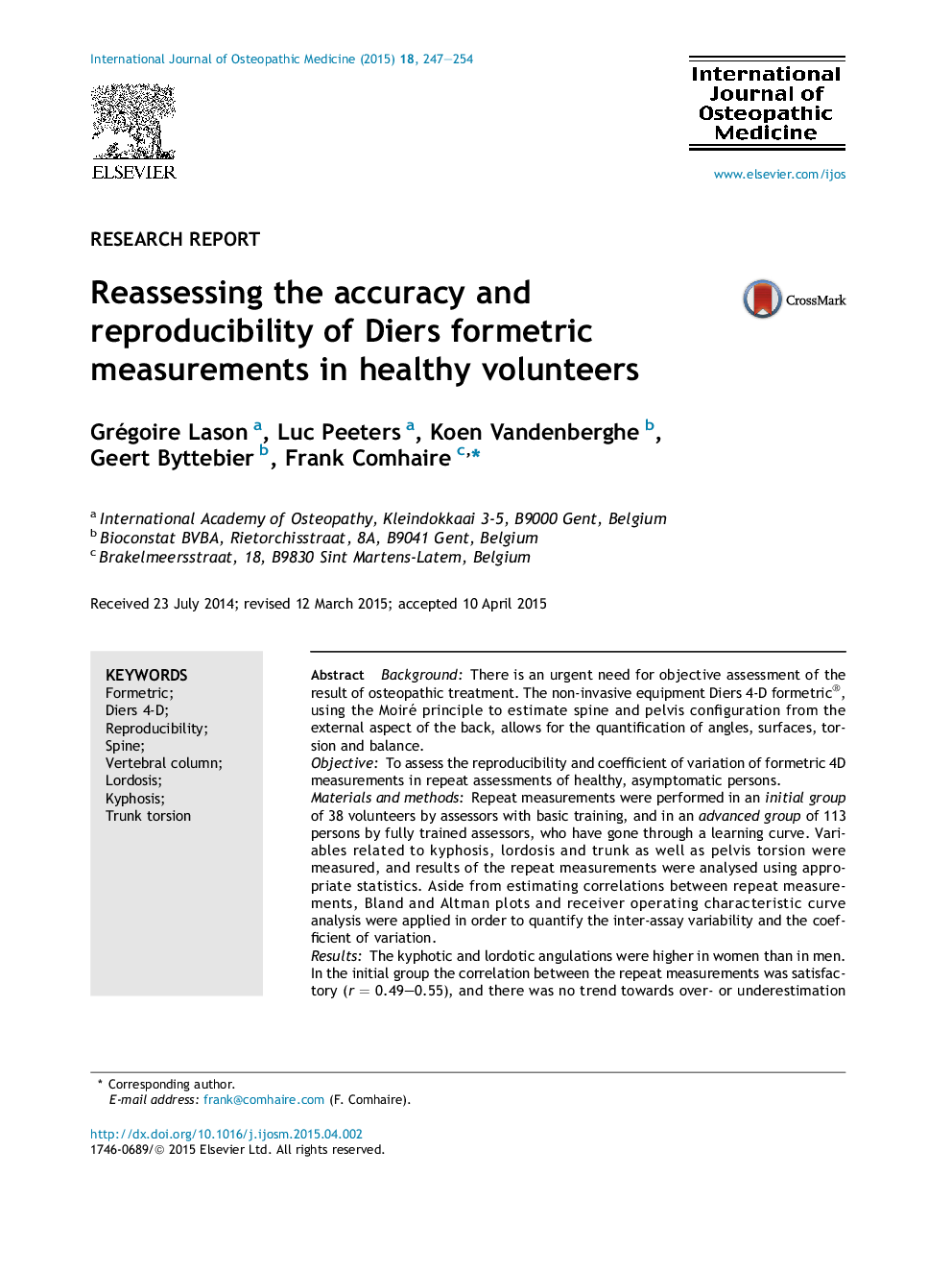| کد مقاله | کد نشریه | سال انتشار | مقاله انگلیسی | نسخه تمام متن |
|---|---|---|---|---|
| 2618010 | 1562990 | 2015 | 8 صفحه PDF | دانلود رایگان |
BackgroundThere is an urgent need for objective assessment of the result of osteopathic treatment. The non-invasive equipment Diers 4-D formetric®, using the Moiré principle to estimate spine and pelvis configuration from the external aspect of the back, allows for the quantification of angles, surfaces, torsion and balance.ObjectiveTo assess the reproducibility and coefficient of variation of formetric 4D measurements in repeat assessments of healthy, asymptomatic persons.Materials and methodsRepeat measurements were performed in an initial group of 38 volunteers by assessors with basic training, and in an advanced group of 113 persons by fully trained assessors, who have gone through a learning curve. Variables related to kyphosis, lordosis and trunk as well as pelvis torsion were measured, and results of the repeat measurements were analysed using appropriate statistics. Aside from estimating correlations between repeat measurements, Bland and Altman plots and receiver operating characteristic curve analysis were applied in order to quantify the inter-assay variability and the coefficient of variation.ResultsThe kyphotic and lordotic angulations were higher in women than in men. In the initial group the correlation between the repeat measurements was satisfactory (r = 0.49–0.55), and there was no trend towards over- or underestimation between repeat measurements. However, the dispersion of the difference between the repeat measurements was relatively broad, resulting in a coefficient of variation of approximately 13–14% for the kyphotic and lordotic angulations. The reproducibility in the advanced group was clearly better with coefficients of variation of approximately 7% for angulations of kyphosis and lordosis, as well as for pelvic inclination. In contrast, the reproducibility of estimates of torsion was poor.ConclusionThe examinations using the Diers 4-D formetric system must be performed with great care for exact positioning of the person, and require adequate training. The interpretation of the effect of treatment should take into account the variability between repeat measurements. Provided the technique is applied correctly, the reproducibility of results is excellent, making this non-invasive system appropriate for clinical trials.
Journal: International Journal of Osteopathic Medicine - Volume 18, Issue 4, December 2015, Pages 247–254
